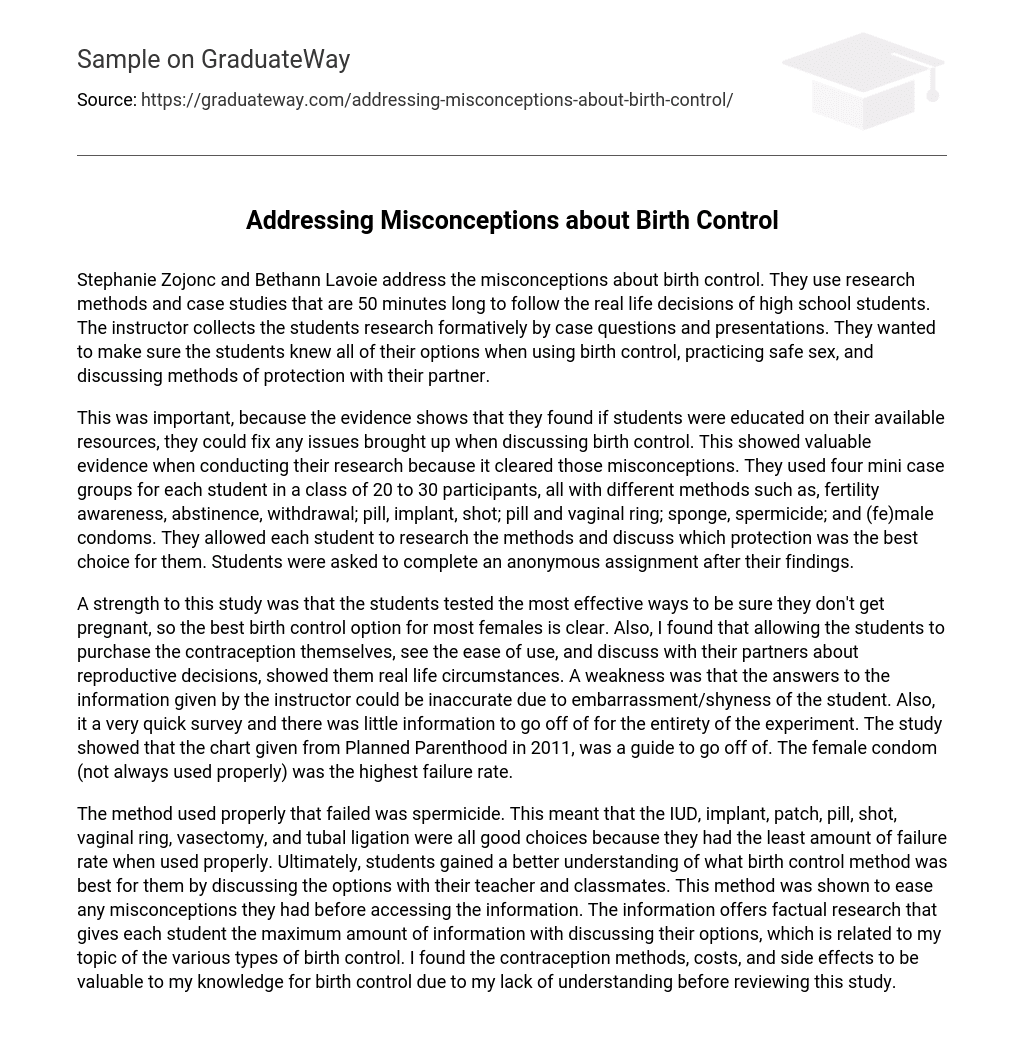Stephanie Zojonc and Bethann Lavoie address the misconceptions about birth control. They use research methods and case studies that are 50 minutes long to follow the real life decisions of high school students. The instructor collects the students research formatively by case questions and presentations. They wanted to make sure the students knew all of their options when using birth control, practicing safe sex, and discussing methods of protection with their partner.
This was important, because the evidence shows that they found if students were educated on their available resources, they could fix any issues brought up when discussing birth control. This showed valuable evidence when conducting their research because it cleared those misconceptions. They used four mini case groups for each student in a class of 20 to 30 participants, all with different methods such as, fertility awareness, abstinence, withdrawal; pill, implant, shot; pill and vaginal ring; sponge, spermicide; and (fe)male condoms. They allowed each student to research the methods and discuss which protection was the best choice for them. Students were asked to complete an anonymous assignment after their findings.
A strength to this study was that the students tested the most effective ways to be sure they don’t get pregnant, so the best birth control option for most females is clear. Also, I found that allowing the students to purchase the contraception themselves, see the ease of use, and discuss with their partners about reproductive decisions, showed them real life circumstances. A weakness was that the answers to the information given by the instructor could be inaccurate due to embarrassment/shyness of the student. Also, it a very quick survey and there was little information to go off of for the entirety of the experiment. The study showed that the chart given from Planned Parenthood in 2011, was a guide to go off of. The female condom (not always used properly) was the highest failure rate.
The method used properly that failed was spermicide. This meant that the IUD, implant, patch, pill, shot, vaginal ring, vasectomy, and tubal ligation were all good choices because they had the least amount of failure rate when used properly. Ultimately, students gained a better understanding of what birth control method was best for them by discussing the options with their teacher and classmates. This method was shown to ease any misconceptions they had before accessing the information. The information offers factual research that gives each student the maximum amount of information with discussing their options, which is related to my topic of the various types of birth control. I found the contraception methods, costs, and side effects to be valuable to my knowledge for birth control due to my lack of understanding before reviewing this study.





